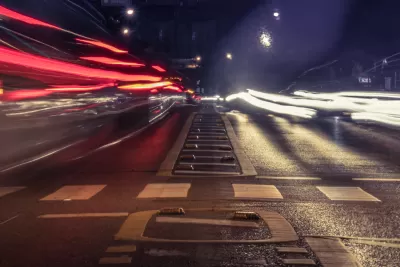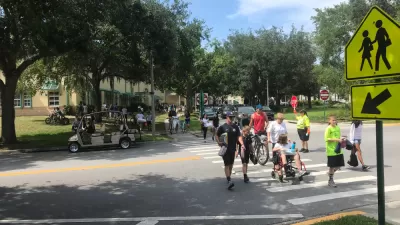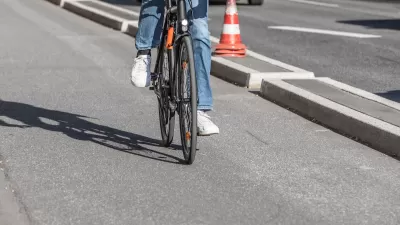When people feel unsafe, they walk less; with fewer pedestrians, walking becomes less safe.

Responding to a recent New York Times story highlighting the high rate of nighttime pedestrian deaths in the United States, Streetsblog’s Kea Wilson notes that the article, which identified some key factors in the road death crisis, missed one other point: “the dwindling number of walkers on our roads may itself be contributing to the nation’s fatality rates — and how much worse the death tolls look when seen in the context of how little Americans walk.”
While walking rates dropped by 36 percent between 2019 and 2022, pedestrian deaths increased by 20 percent. “And because walkers are generally safer in numbers, thinning that herd can have deadly consequences for anyone who remains.” As Wilson points out, the U.S. has a much higher per-mile pedestrian death rate than countries like the U.K. or the Netherlands.
Traffic engineer David Levinson calls this phenomenon as the “cycle of unwalkability,” wherein “the presence of cars worsens the conditions of pedestrians; worse conditions for pedestrians reduces walking; reduced walking increases the use of cars; repeat.”
“We don’t just need to install streetlights, redesign roads and cars, disable cell phones when their owners are behind the wheel, and give the poor the mobility and housing options they need to keep them out of harm’s way.” For Wilson, it will also take the rebuilding of “a culture of walking.”
FULL STORY: The Other Reason American Pedestrian Deaths are Rising After Dark

Alabama: Trump Terminates Settlements for Black Communities Harmed By Raw Sewage
Trump deemed the landmark civil rights agreement “illegal DEI and environmental justice policy.”

Study: Maui’s Plan to Convert Vacation Rentals to Long-Term Housing Could Cause Nearly $1 Billion Economic Loss
The plan would reduce visitor accommodation by 25% resulting in 1,900 jobs lost.

Planetizen Federal Action Tracker
A weekly monitor of how Trump’s orders and actions are impacting planners and planning in America.

Wind Energy on the Rise Despite Federal Policy Reversal
The Trump administration is revoking federal support for renewable energy, but demand for new projects continues unabated.

Passengers Flock to Caltrain After Electrification
The new electric trains are running faster and more reliably, leading to strong ridership growth on the Bay Area rail system.

Texas Churches Rally Behind ‘Yes in God’s Back Yard’ Legislation
Religious leaders want the state to reduce zoning regulations to streamline leasing church-owned land to housing developers.
Urban Design for Planners 1: Software Tools
This six-course series explores essential urban design concepts using open source software and equips planners with the tools they need to participate fully in the urban design process.
Planning for Universal Design
Learn the tools for implementing Universal Design in planning regulations.
Caltrans
Smith Gee Studio
Institute for Housing and Urban Development Studies (IHS)
City of Grandview
Harvard GSD Executive Education
Toledo-Lucas County Plan Commissions
Salt Lake City
NYU Wagner Graduate School of Public Service




























